A few years back, I spent five days in Montenegro, hitting up the country’s capital Podgorica, the coastal beach town of Budva, and the UNESCO World Heritage site of Kotor. By far, Budva was my absolute favorite, especially the walled Old Town (Stari Grad).
As usual, I walked around the city taking photos, and way more than needed. Since leaving, I’ve often dreamed of going back, walking those narrow streets, and feasting on seafood daily. For now, I can only go through my photo archives, with the hopes that not only will I return someday, but that it will also inspire you to visit Budva Montenegro too.
Inspiring Photos To Make You Want To Visit Budva Montenegro

Surrounded by mountains, Budva has a bustling seaside promenade, plenty of beaches, a historic Old Town, and a happening nightlife. Considering all of these things, it’s no wonder that Budva’s the most popular destination in all of Montenegro. With a population of 14,000, it swells to 20,000 during warmer seasons when visiting tourists come to enjoy all the town has to offer.
After exploring the capital of Podgorica for 24 hours, I was more than ready for a weekend by the sea. Suntanning on a beach chair with a cocktail in hand was at the top of my mind. Even though I ended up spending hours at various beaches, it was Budva Old Town that captivated me.
Visit Budva Montenegro To Learn About The History
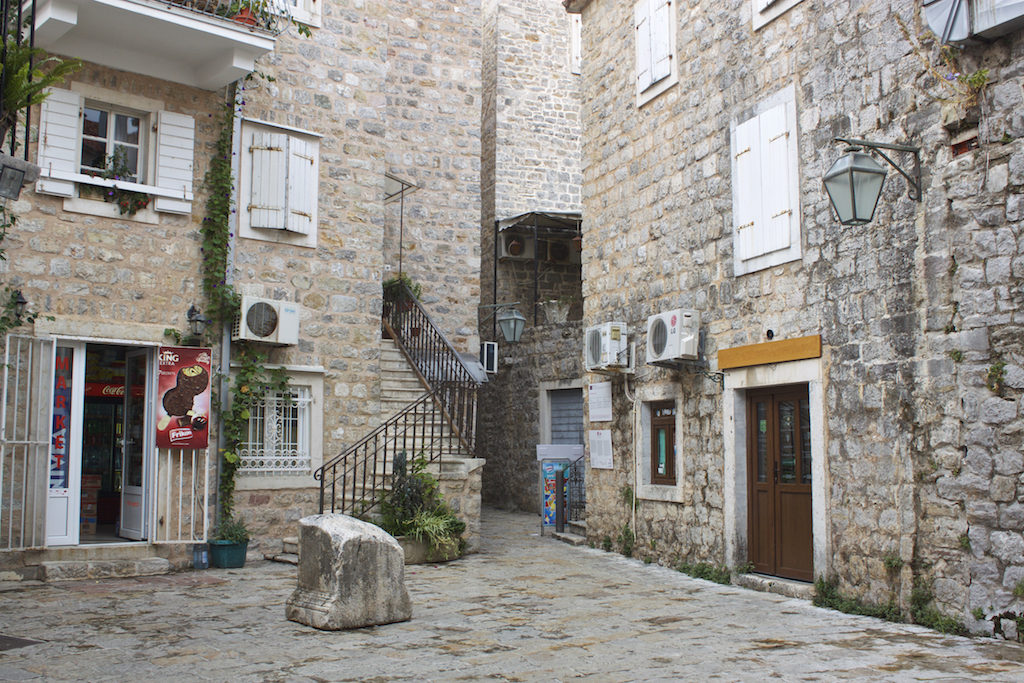
Around 2,500 years old, Budva’s one of the oldest settlements along the Adriatic sea in Montenegro. Throughout its turbulent history, Budva was occupied by the Greeks, Romans, and Byzantines was later sacked by the Saracens, and reigned over by a number of Doclean kings and other Serbian and Zetan aristocrats. Later the Venetians arrived and ruled the city for around 400 years. To fight off Ottoman conquest, they built the three-meter thick limestone walls that surround the old town, including several towers, a citadel, and several fortified gates.
In 1797, control of the city fell briefly to the Habsburg Monarchy, Russia, and then France before being ceded to the Austro Empire. Their rule lasted until the end of WWI when Budva became part of the Kingdom of Yugoslavia. In WWII, the town was annexed by Italy, but after being liberated by the end of the war, it was consolidated into the Socialist Federal Republic of Yugoslavia. Montenegro finally gained independence in 2006, with Budva being the mainstay of the country’s tourism.
The Outer Walls of Budva Old Town
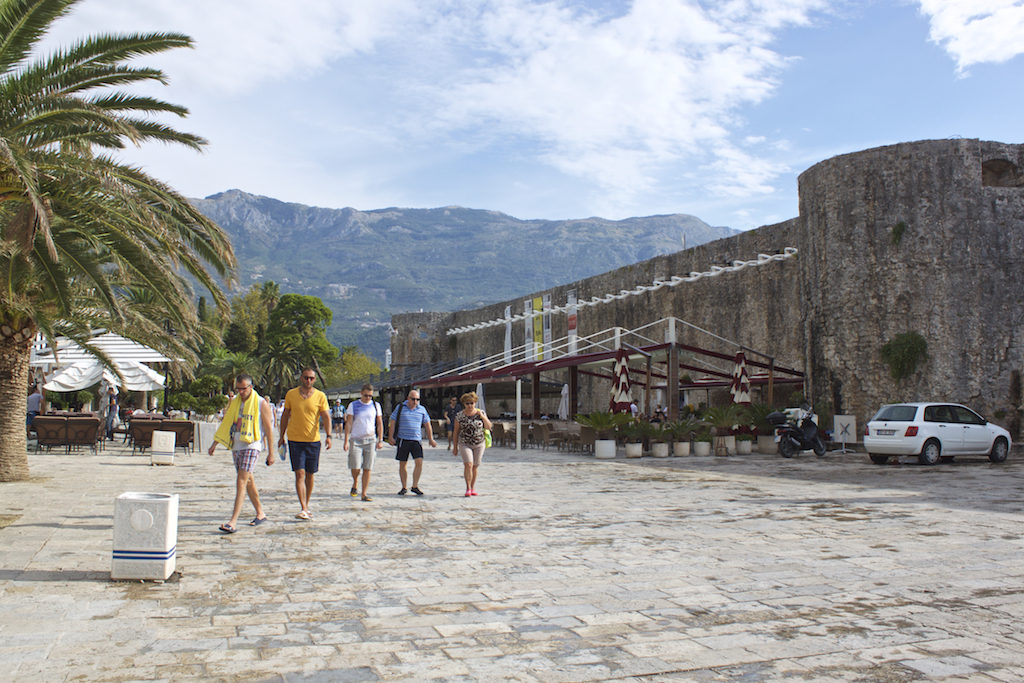
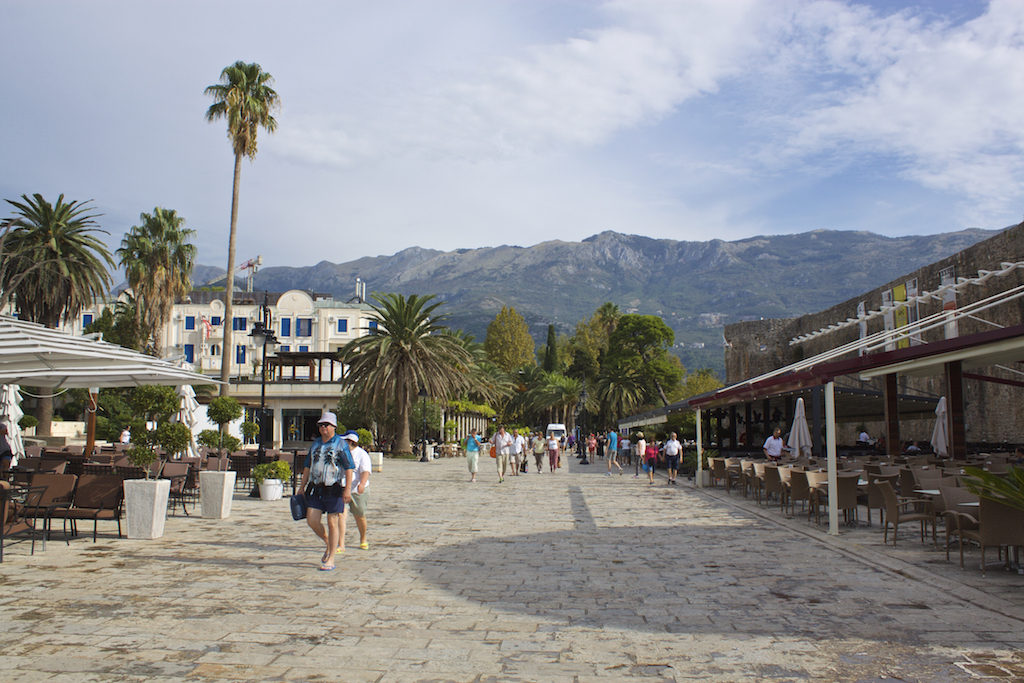
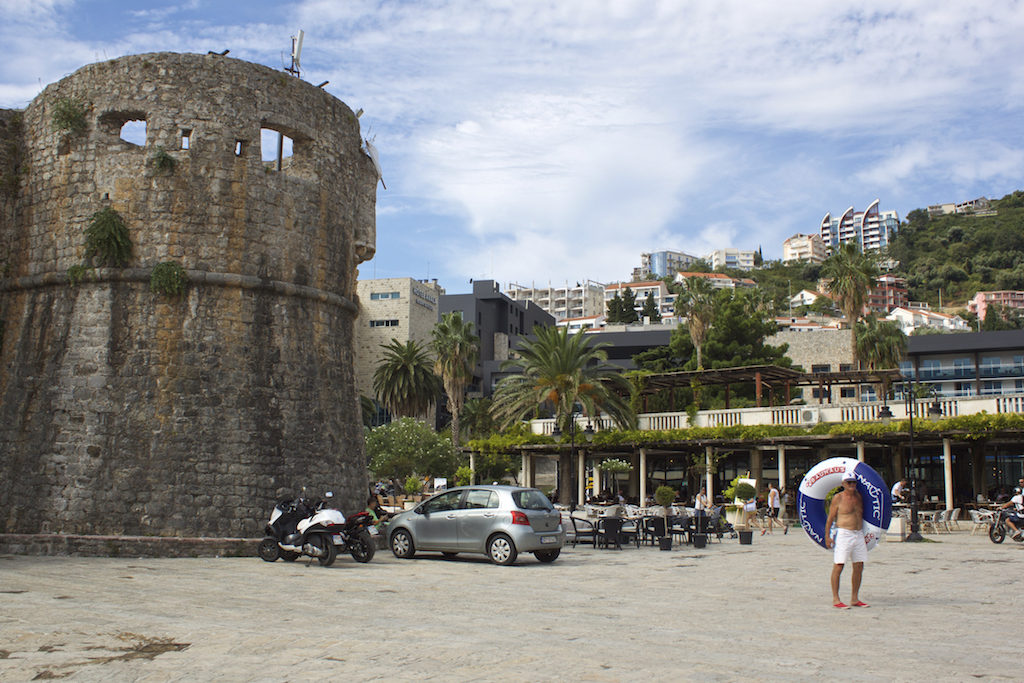

You can easily enter Old Town through one of the many open gates. The main entrance is the Porta di Terra Ferma, which connects to the town’s main street. There are also four more gates elsewhere along the wall. From the outside, not only can you glimpse the thick limestone wall, but you can also see the crumbling citadel. There are also many places where you can stop for a meal or a cold drink under the shade of an umbrella.
Inside the Walls of Budva Old Town
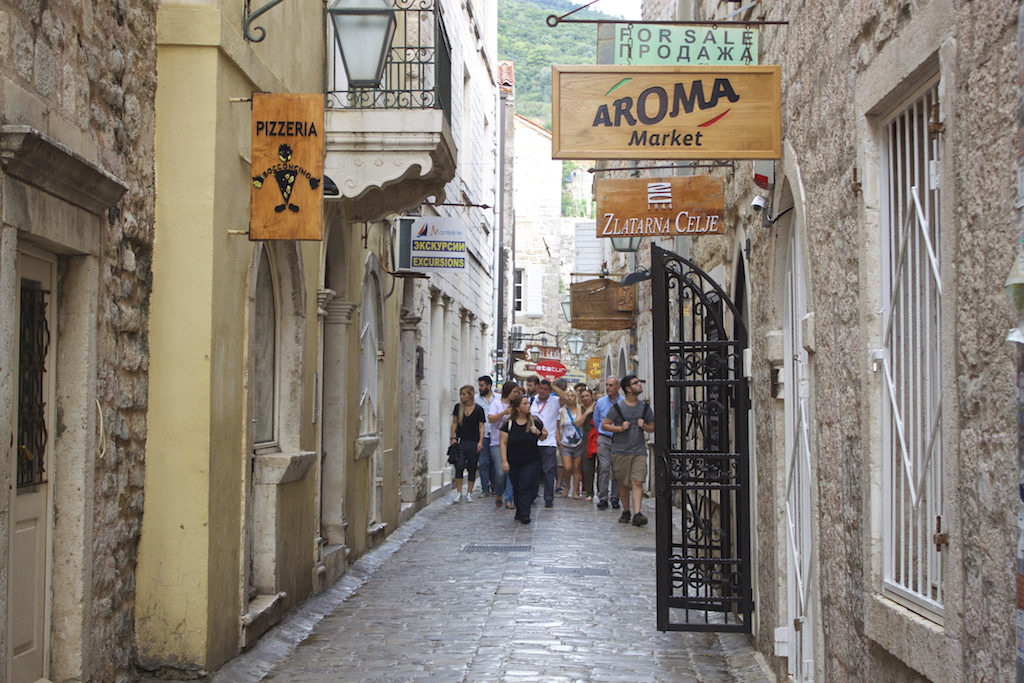
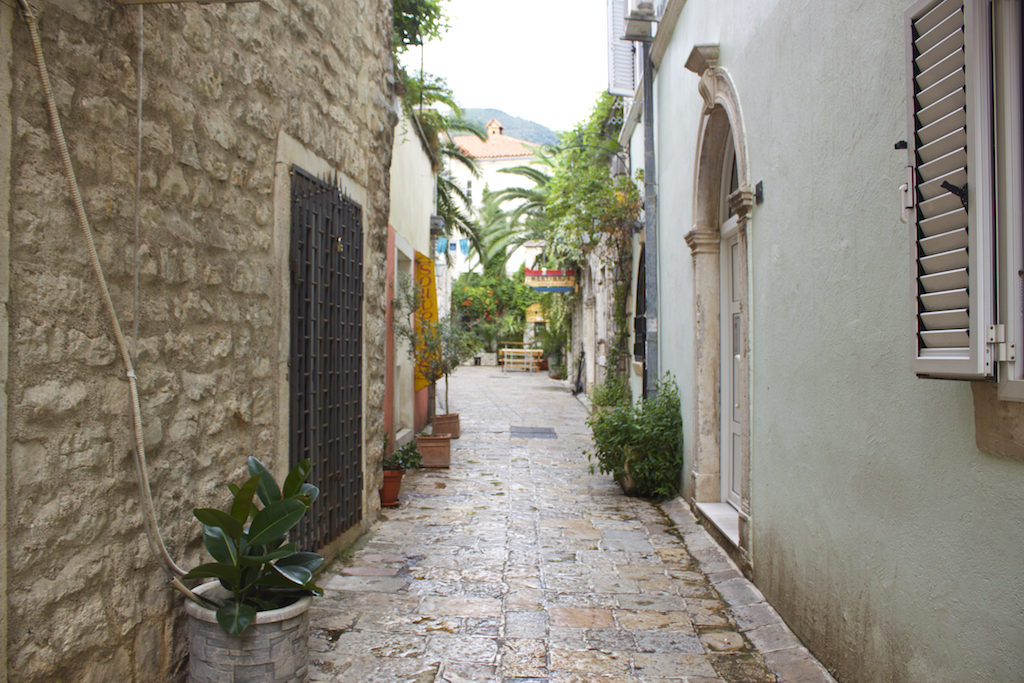

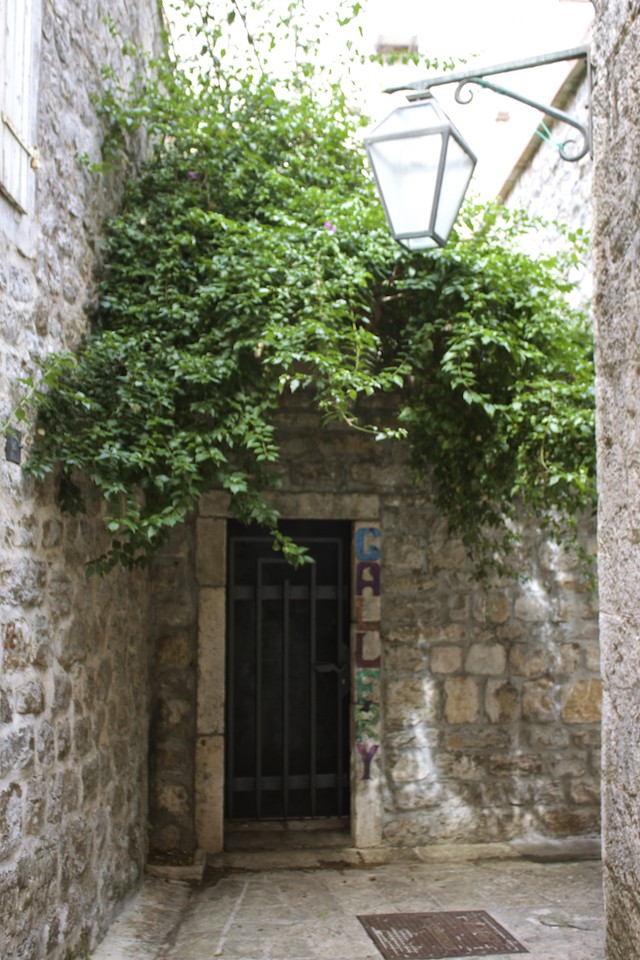
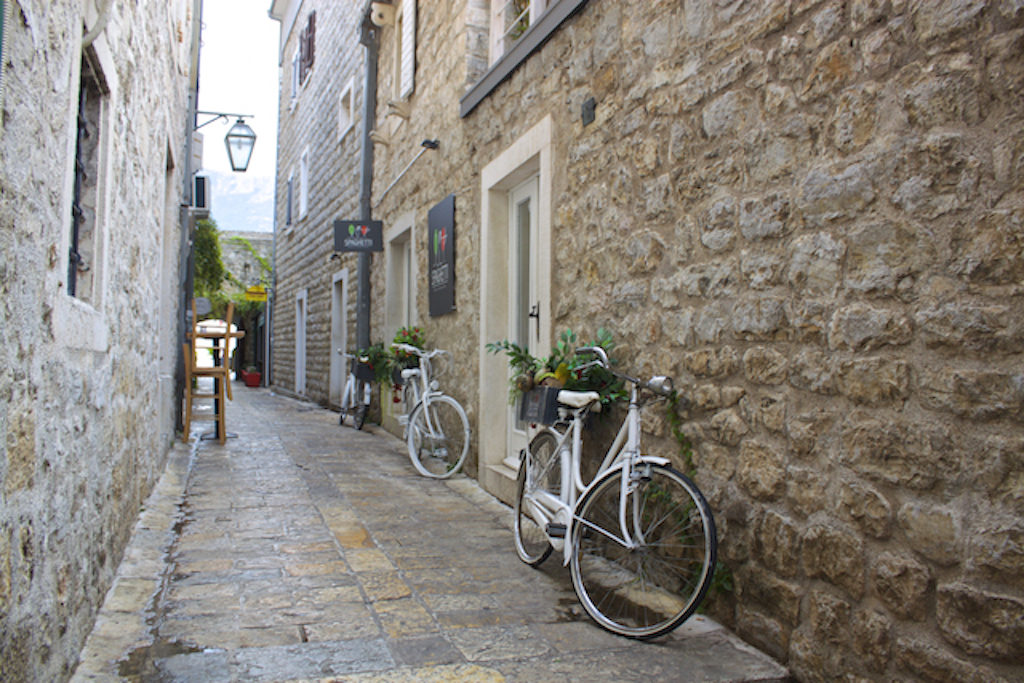
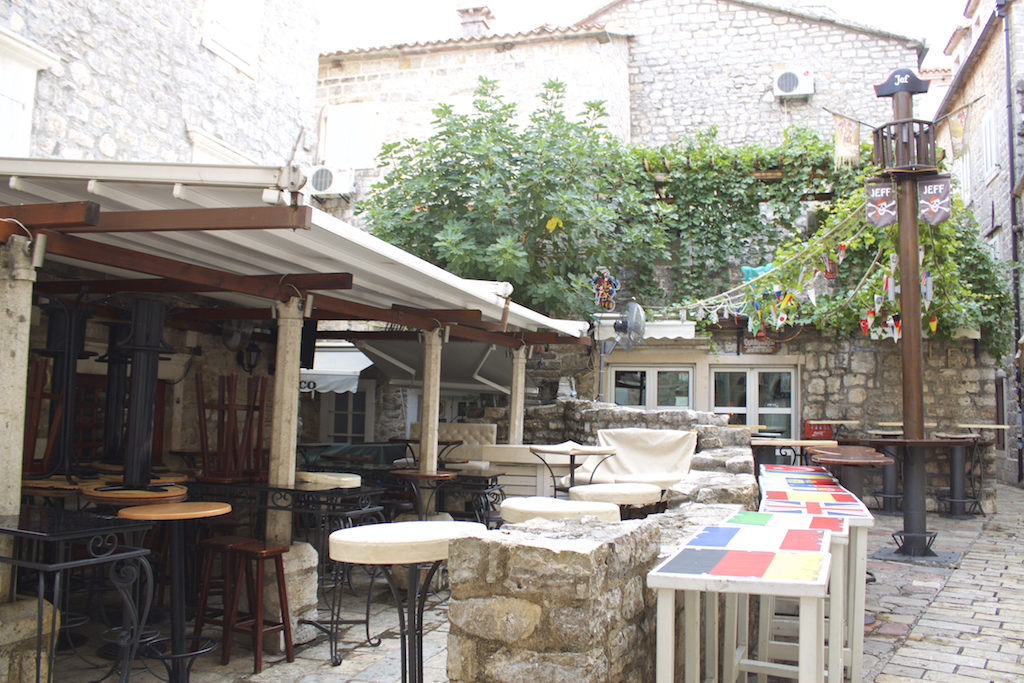
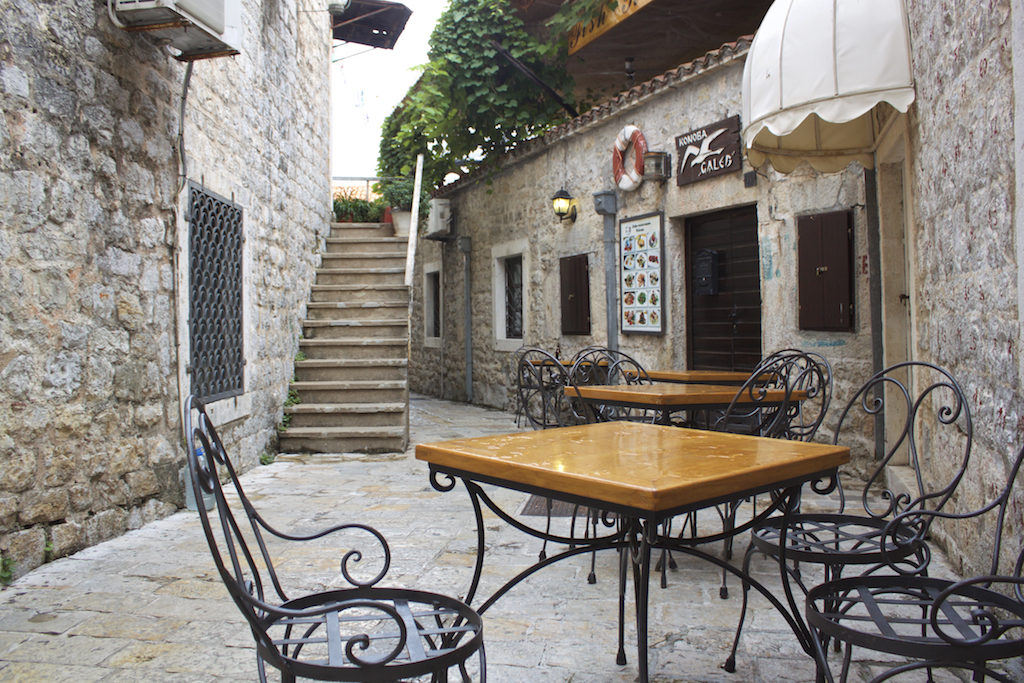
Although not large, it’s easy to get lost in the octagonal maze of pedestrian-only streets, piazzas, and alleyways. I found myself wandering through the walled medieval labyrinth of narrow cobblestoned streets, peeking into residential courtyards filled with bougainvillea, stopping now and again at a bar for a cold glass of white wine, all while pondering the fact that I was sitting in a house that was once home to a merchant business hundreds of years ago.



Although Budva doesn’t attract cruise ships like nearby Kotor, the city still floods with tourists coming at 9:00 – 10:00 a.m. Wake up early like I did to avoid the crowds, soak up the ambiance, and take photos that don’t capture people posing with their selfie sticks.
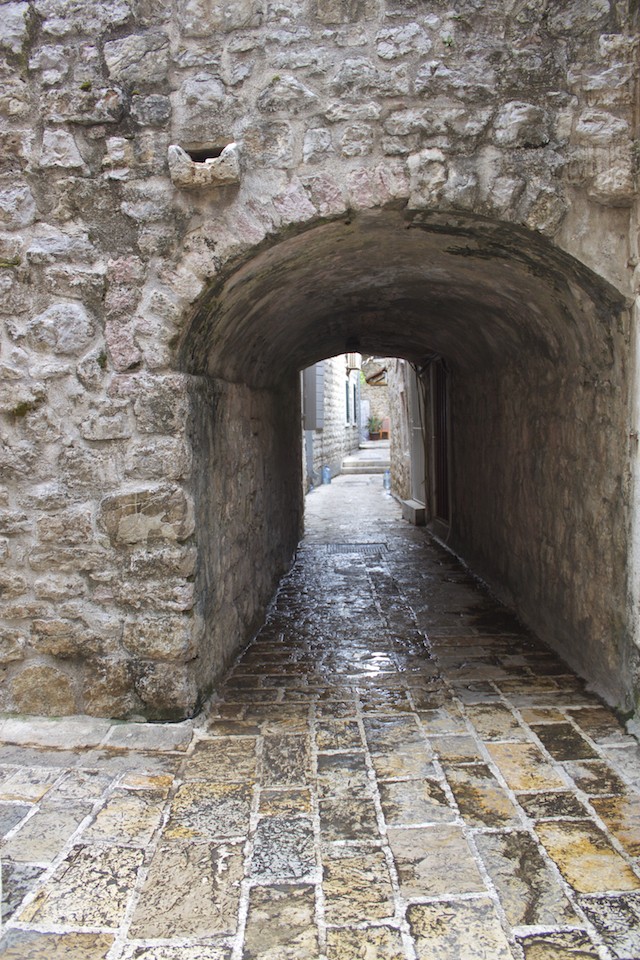
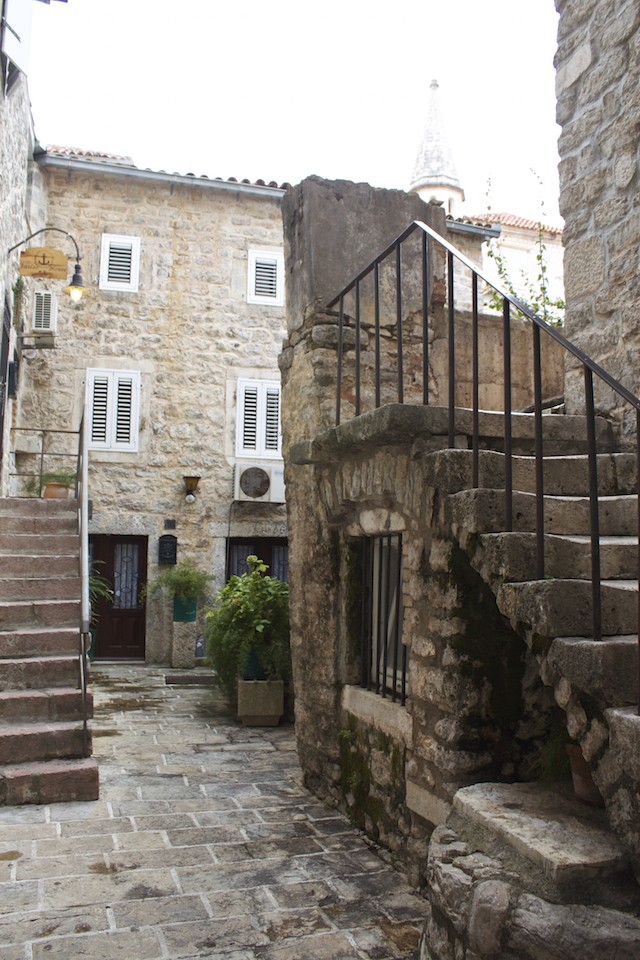
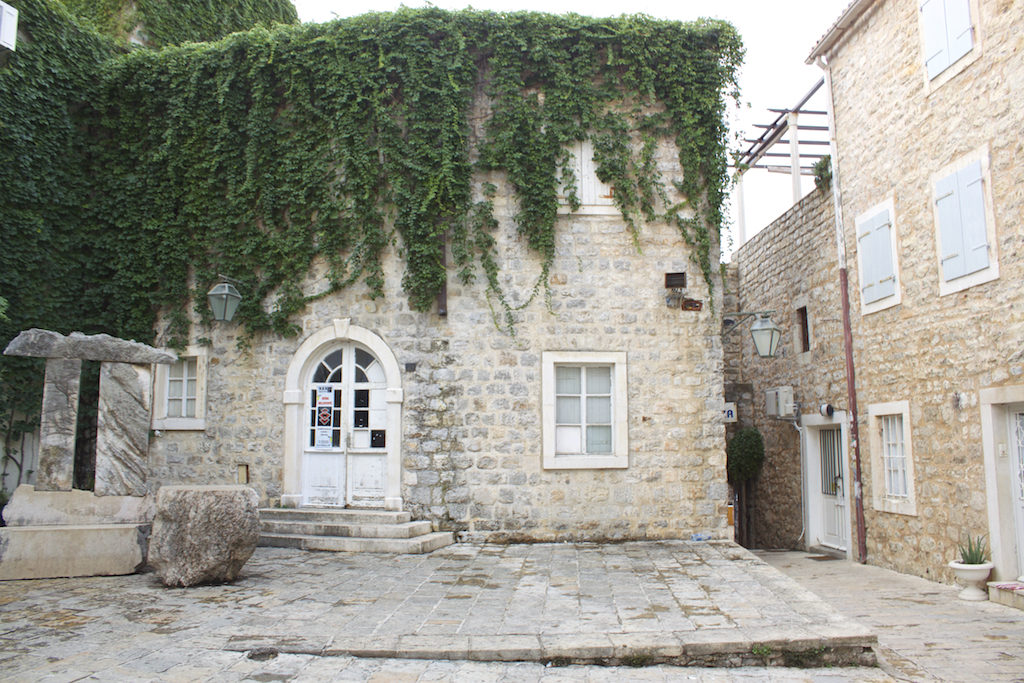

Photos Of Budva From The Sea
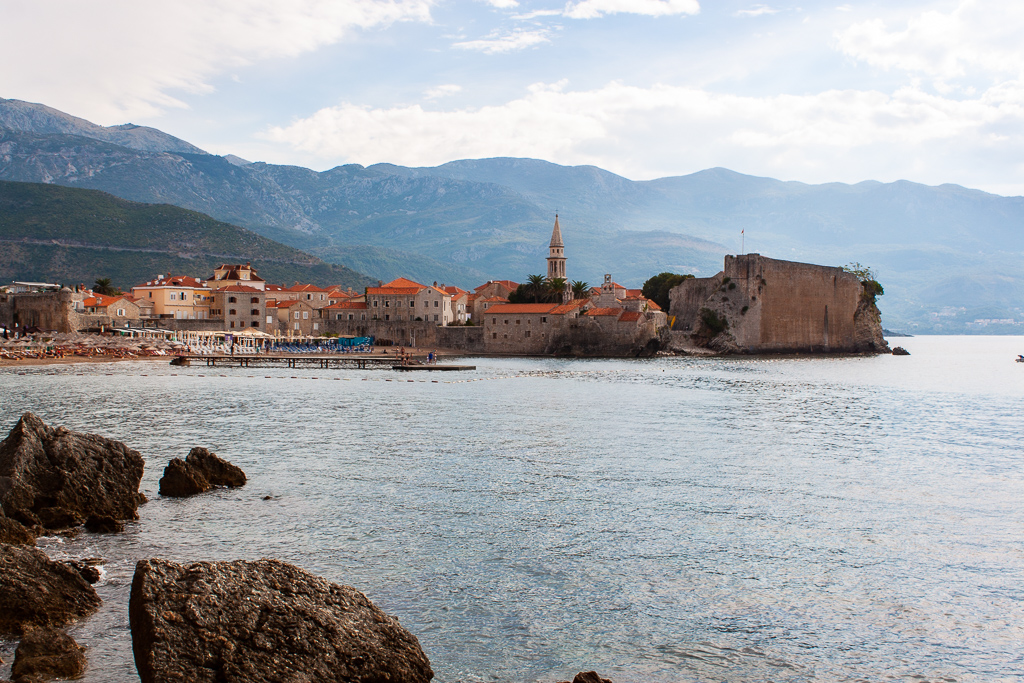



Why come to Budva these days? Aside from wandering through Budva Old Town feeling as if you’re on the set of Game of Thrones and thinking “This is exactly what I imagined King’s Landing to be like …” – eat at one of the many trendy restaurants, sample local white wines, laze at one of the beaches, pose with the ballerina statue (everyone does it!), and go clubbing or gambling by night. If you’re up for some culture, visit during the annual Sea Dance Festival, Carnival, and Budva Grad Teatar events.
What do you think? Do these photos inspire you to visit Budva Montenegro too?
Where to Eat
Budva’s proximity to the Adriatic means that you can feast on fresh seafood each and every day. Get the lowdown on my favorite restaurants in Budva:
1) Konoba Stari Grad – Tucked away within the streets of Budva’s Old Town, come here for the timeless ambiance and the most delicious Mediterranean seafood you may ever taste. The location’s actually been a set for several movies! Listen to live music and watch the sunset from their beachside terrace as you feast on local cheeses, smoked ham, and their specialty, octopus ragu that’s slowly cooked in tomato sauce for several hours. Be sure to choose a wine from their huge list, perhaps indulging in one of their many Montenegrin wines.
2) Jadran Kod Krsta – This restaurant along Budva’s seaside promenade is constantly packed full of both locals and tourists. With many homemade Italian dishes on offer, you’ll also have your pick of fresh fish, mussels, clams, crab, and more. Expect live music, friendly wait staff, and an oddly decorated interior with old bikes and cars.
3) Porto – Also situated on Budva’s bustling promenade is Porto. Whether you’re seated outside beside the Adriatic or within its airy garden-like interior, their seafood game is top-notch. All of it is brought in daily by local fishermen, like clams, crabs, octopus, grouper, and prawns. Highly recommended is their homemade bread baked in a wood-fired oven.
Good to Know
1) Montenegro makes for a great weekend trip away from Berlin. Get there on the cheap with Ryanair and be in Podgorica in just over two hours.
2) Budva’s about an hour away from the capital and can easily be reached by public transport. Buses run frequently and will cost you about €5 for a ticket. Taxis are another option and shouldn’t cost you more than €25-30 if you book through your hostel or hotel.
3) Montenegro uses the Euro. Expect prices for everything to be substantially lower than in most other European countries.
4) Find a place to stay in Budva with booking.com.
Booking.com5) Make your time in Budva even better and go on a guided tour.
6) If you’re a fan of European travel, check out some of our other travel guides.
- 10 Cheap European Destinations You Should Visit – A list of cheap European destinations you should visit. Our recommendations will take you to the continent’s most off-the-beaten-path places.
- How To Spend A Wonderful 24 Hours In Warnemünde – How to spend a wonderful 24 hours in Warnemünde, Germany. Think seafood feasts, therapeutic spa time, and sunset at the Baltic Sea.
- The Stockholm Public Library Is A Swedish Architectural Icon – Visit the open-shelved, three-story, circular-shaped Stockholm Public Library to be surrounded on all sides by more than 2,000,000 titles.
*Disclosure – This post contains some affiliate links. If you book a tour or hotel, I’ll earn a tiny commission at no extra cost to you. Thanks for your support!

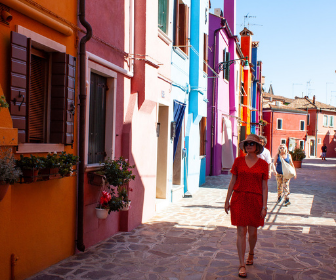
Hi Cheryl,
We just house sat for a couple living in Thailand who spent time in this region. Their Montenegro pics were glorious. They also stressed how the place is off the tourist beaten path – for now – which gave it charm and personality too, with characters wandering the streets, telling tales. Really fun time.
Super shots and fab round up!
Ryan
Hey Ryan –
Montenegro is definitely glorious. Hope you get to visit soon. 🙂
I actually found the place to be crawling with tourists. Apparently, the place is quite popular with Russians! But I guess it depends on where you’re hanging out. Podgorica was definitely not that busy with tourists but Budva and Kotor were a different matter.
And thanks for your kind words. 🙂
Cheryl
We stopped at Budva when driving from Dubrovnik to Tirana, only had the day there. Your photos make me wish I’d spent a little more time.
This looks so pretty! I’ve not visited much of Eastern Europe sadly but this looks gorgeous.
I spent a long weekend in Montenegro in September, too! Also stopping in Budva. What a beautiful place! I really loved exploring the town, as well as the other stops I made in the country. Your photos brought back some pleasant memories for me 🙂
I haven’t visited much of Eastern Europe but I want to go!! I look the history of the places you described and the rustic look of the buildings in your photos.
Ah I am so glad I came across this. There is not much information out there in the travel blogging world about this place and I am headed there in a couple months. especially happy to read restaurant recommendations! Just wrote down the names in my travel planner! Thank you!!!
Ahh, this just means you need to go back there Lara! 😉
It’s my favourite part of the world. I can’t wait to make my next trip!
Hey Kristen –
That’s so awesome! I fell totally in love with Montenegro on that trip. Glad to brought up some nice memories for you too. 🙂
Cheryl
Thanks so much Delahaye – I highly recommend a visit to Montenegro! <3
Awesome to hear Sara! Enjoy your time there. And glad to hear the restaurant tips will come in handy. 😉
This looks like an amazing little village to explore!
It’s such a beautiful place! Have you been there?